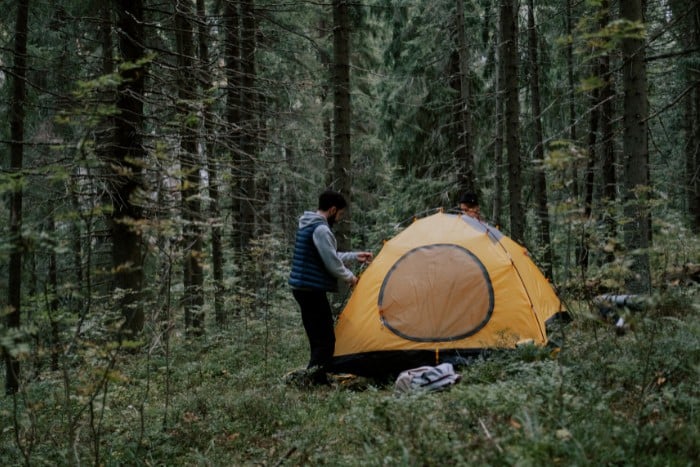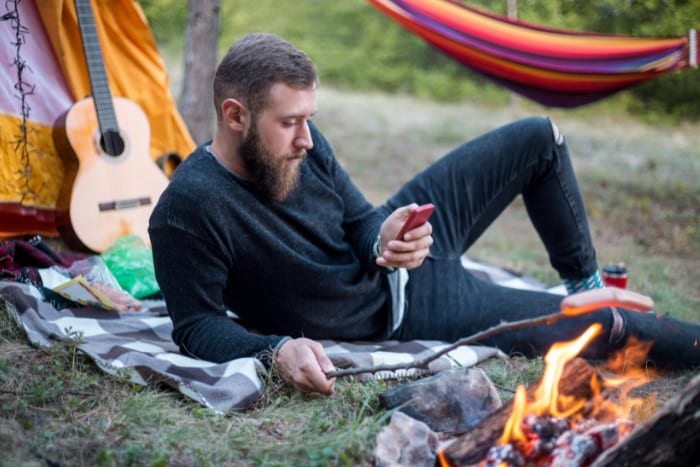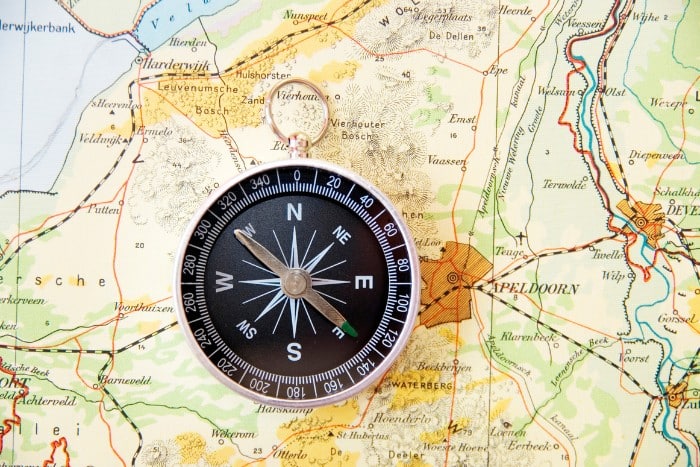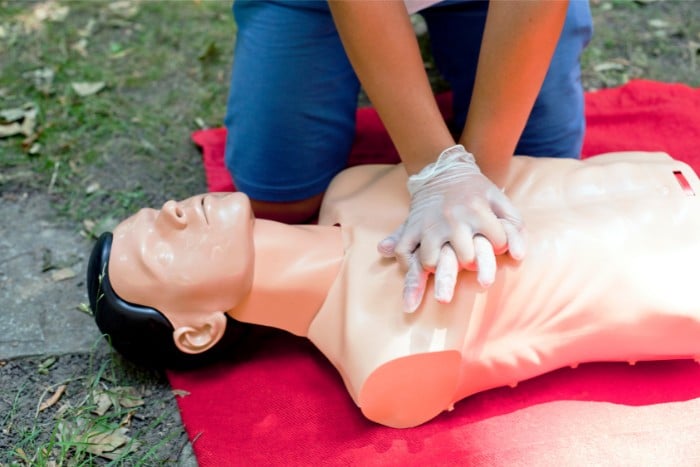Primitive camping is all about experiencing the wild side of nature. Sourcing your water, constructing your shelter, or building a fire, are all part of the fun of primitive camping. If you’re new to primitive camping or it’s a favorite pastime, here we’ve got some essential primitive camping tips for you.
While primitive camping choose a flat, elevated spot for your tent to avoid flooding and discomfort. Pack a reliable water filter to safely drink from natural sources. Master basic fire-starting techniques for warmth and cooking.
Keep reading for all the tips and suggestions you could need before setting out on your primitive camping adventure! We recommend you prepare for and understand your terrain before beginning any primitive camping expedition.
Primitive Camping Basics
Learn about the best time of year and where it’s best to go primitive camping in the wild. We’ll give you a list of essential primitive camping equipment and tips on skills you will need. Finally, we leave you with some vital primitive camping tips such as ‘leave no trace’ and considering the wildlife.
1. What is Primitive Camping?
Primitive camping is camping in the wild without any amenities. It is also unlikely that your camp spot is accessible by road. Campers can travel to their campgrounds by foot, ski, or boat.
Primitive camping is about leaning into nature by seeking water sources and using wild materials to create fire and shelter.
Everything you will need for your camping trip is likely on your back, as you’ll be far from any shops. Primitive camping is exciting and restorative.

2. What Time of Year Should I Go Primitive Camping?
Anytime! Primitive camping is great year-round. Every season offers a different aspect of nature to explore and camp in. Spring brings the awakening of wildlife after winter.
Primitive camping in spring is usually quieter, with fewer crowds. Summer can be busier due to the warm temperatures and longer days.
Primitive camping in Autumn brings cooler weather but beautiful views. Winter can be challenging when primitive camping, but that’s part of the fun.
Pack your layers and get ready to experience a peaceful winter wonderland, with snowy camping spots likely to be very quiet.
3. Choosing the Best Spot
It’s best to choose a spot slightly away from a hiking trail. This means you’ll have privacy and can enjoy the wild all to yourself. It’s also best to choose a spot that’s sheltered.
This could mean camping with rocks or bushes behind you. If you’re camping in the snow, try to avoid camping under a tree, as heavy snowfall could cause a branch to break on your tent.
Finally, camp close (but not too close) to running water. It’s great to have a water source close by.
What Should I Take Primitive Camping?
Primitive camping usually means you are traveling light without many luxuries. With all your gear, knowing what to pack may leave you confused.
Here are 10 essentials you won’t want to leave home without.
1. Shelter
Your shelter could be a tent, a tarp, or materials you plan to use to build your night shelter. When primitive camping, it’s best to choose a shelter that is adapted to the terrain you’ll experience.
For example, if you are camping in the woods, your tarp will easily tie between trees instead of using a tarp in the desert where it can move freely.
2. Clothing
Primitive camping clothing is clothing that is suited to your camping environment. If you’re camping in the cold, pick breathable clothing that will keep you warm but ventilate sweat.
You also want to pack a different set of clothes for sleep. This makes sleep more pleasant and will keep you warmer. Also, pack clothing that applies to the temperature.

3. Sleeping Setup
Your sleeping system comprises any equipment you’ll need for sleeping comfortably. This could be a sleeping bag, mat, cot, or hammock.
If you need to hike to your primitive camping location, then your backpack may limit how much you can carry. If this is the case, pack a sleeping mat and bag.
4. Water Supply
When primitive camping, you need to bring water.
If you’re desert camping in the height of summer or camping in winter where your water source may be frozen, then you need to bring enough of a supply to last your trip.
If you know there’ll be an accessible water supply; then you need enough water to last you until you reach it.
5. Camping Stove
There are lots of different camping stoves you can take primitive camping. You can choose from a canister, wood, or alcohol stove.
Either way, with a camping stove, you can easily cook meals, boil water and create a heat source. Taking a camping stove can eliminate any worries if you’re unsure what materials will be available.
6. First Aid Kit
This is essential that you never want to leave your house without. Primitive camping can be dangerous, which is part of the thrill, but you don’t want any unexpected injuries that you aren’t prepared for.
Your first aid kit doesn’t need to be huge, just make sure you pack these essentials: antiseptic wipes, bandages, dressings, and safety pins.
7. Knife
For primitive camping, it’s debatable whether packing a knife is essential. We believe it’s better to have one than to get in a situation where you’ll need one.
Taking a knife primitive camping isn’t for bear hunting, a knife can have hundreds of uses from building a shelter to creating a fire.
You can pack a pen knife or something larger, depending on what you will use it for.

8. WaterProofs
Primitive camping is all about experiencing the wild outside, including the elements. It’s difficult to assume that every camping trip will be 100% dry, so don’t forget your waterproofs.
If you get wet without waterproofs, you could open yourself up to hypothermia or other illnesses. Waterproofs can vary in size and don’t have to take up much space in your pack.
9. Light
Taking a torch or headlamp camping can be a lifesaver in the middle of the night. You may use your phone as a torch, but this can run the battery down pretty quickly.
Pack a small torch to navigate your camp or hiking route at night. You don’t want an accident because you can’t see in the dark.
10. Compass and Map
Primitive camping can take you into no cell phone territory, so it’s best to take a compass and map to navigate. Test your compass first. You can do this with another compass and calibrate it with your map.
If your map isn’t waterproof, putting it into a see-through folder is handy, so you can use it no matter the weather.
What Skills Do I Need For Primitive Camping?
It’s best to have some basic survival skills before starting your primitive camping adventure.
Map reading, fire starting, and water sourcing are a number of the skills we recommend you acquire before you leave the house. Keep reading to learn more skills to help you during your wild camping trip.
1. Map Reading
You’ve packed your compass and map, but do you know how to use them? It can be easy to get lost in a forest or any unknown terrain, so brush up on your map-reading skills before you set off.
Also, test your compass to check it points true north and keep it away from magnets. A bonus is preparing yourself with basic geography knowledge.
This skill can help you find water, ensure you put up your shelter in a safe space and let you know where uneven ground is.

2. Fire
Fire skills are the understanding of building a fire from the materials around you.
Imagine your camping stove breaks, and you need another way to cook, or you run out of batteries for your torch and need a light source. Fire is the solution to these problems.
Building a fire may seem fairly straightforward, but when you haven’t got firelighters, it can take some patience. Fire skills also help you to pick a safe spot to build a fire, helping you avoid any hazards.
3. Water
Water skills encompass purifying water to finding a safe water source. Before purifying water, you need to find it.
It’s best to research the water sources you will find during your trip and then mark them on your map.
It’s also important to understand how to use a water filter, use water purifying tablets, or (if you have neither) understand how to boil water to purify it.
It’s also crucial to note, when primitive camping, you should always go to the toilet 200ft away from a water source. You don’t want to contaminate the water for you or others.
4. Animal and Plant Recognition
Wherever you choose to set up your primitive camp, it’s important to have some knowledge of the animals and plants you’re likely to encounter.
Depending on the season, you can expect to recognize different animals. For your safety, it’s essential to know if you’ll be in active bear territory or if they are hibernating.
The same goes for plant recognition. If you are potentially using plants as a food source on your primitive camping trip, you need to ensure you aren’t eating anything poisonous.
A good source to use before heading out is iNaturalist, an app that allows you to look up on a map all the wildlife observations made.
Filter your search by month and get an idea of what wildlife you may potentially encounter.
5. First Aid
Packing a first aid kit is vital but knowing how to perform first aid is crucial. It could be likely that you are far from any medical facility and need to prepare for any scenario in the wild.
Any primitive camper should have a basic understanding of performing first aid. Knowing CPR, treating burns or cuts, or even a broken limb is best.
Even if you don’t experience any accidents, it puts your mind at ease to know you know about treating them.

6. Shelter
Tents are not invincible, and the time may come when it just isn’t doing the trick. When this happens, it’s great to have shelter-building skills.
These can help you identify the best place to build a shelter with cover from the wind or rain. You can then use these skills to build a shelter out of leaves and branches.
If you’re primitive camping in the snow, these skills may extend to building igloos or snow caves to stay in.
Final Tips On Primitive Camping
Finally, we’ve got some extra tips for you before starting your primitive campout. Always ensure you leave no trace, consider the wildlife, and plan and inform someone of your whereabouts.
With these, you can begin your primitive adventure!
1. Leave No Trace
The first rule of all camping, not only primitive, is to leave no trace. Leaving no trace is the understanding that you are leaving your campground exactly as you found it.
You minimize the impacts of your campfire, collect your litter in your bag, and leave anything you’ve found. You will even need to take your fecal waste back with you in some spots.
Leaving no trace is about respecting wildlife and natural space.
2. Wildlife
It’s important to recognize animals you may encounter on your camping trip and know how to avoid unwanted animal encounters.
Packing your food in air-tight containers or a bear-proof bag above your tent will prevent animals from being attracted to your camping spot.
Also, be aware of the insects you may encounter. If you are camping by water, you’ll likely encounter mosquitos. In this case, make sure you pack insect repellant.
Planning is the best way to avoid unfortunate incidents with wildlife.
3. Plan
Primitive camping relies a lot on preparation. While it may be exciting to camp in a space you know nothing about, this can also put you in danger.
It’s best to pack for the terrain, prepare for any weather and plan your route.
If you are primitive camping in a National Park, then it is more than likely the park will have specific regulations, make sure you check and adhere to these.
4. Let Someone Know Where you Are
It’s important to let someone know where you will be primitive camping, whether that’s a park ranger or a close friend.
If you have an accident, it could make a difference in how long the help takes to get to you; hours or days. This is particularly important if you plan to primitive camp alone.
It can be very freeing to be alone in the wild. Just make sure you camp safely.

Conclusion
This article gives you a load of handy tips to make your primitive camping trip as enjoyable as possible. It’s important to pack your essentials over luxuries and have an understanding of basic survival skills.
Finally, make sure you leave your camping spot exactly as you found it. This ensures a sustainable future for the wildlife you’re camping in. Primitive camping is all about enjoying nature’s wild!
